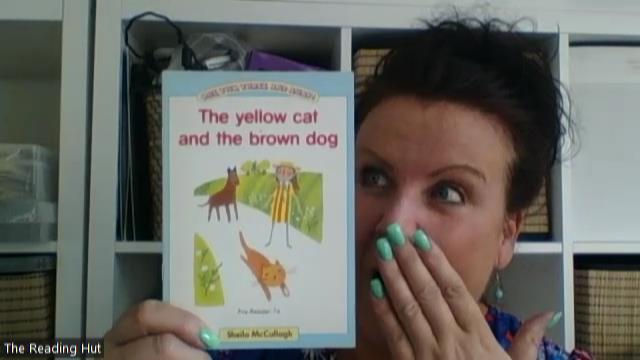
Welcome to Speedie Readies. Join the Three Learning Corners, and access the orthographically mapped One, Two, Three and Away! series of books online. Show the Code with Phonemies! Train as a Tutor.

More than 100 stories in the Reading Corner facilitate self-teaching, the development of orthographic mapping and reading for pleasure by age 7.
Speedie Readies: Show the Code! Children can see how letters and sounds connect with Phonemies.
Supporting children to read and spell more easily using the Dual Route Learning System. Ten minutes a day. Start for £23.
















































"Ten Minutes a Day, With a TA! Word Mapping Mastery starts with Speech Sound Play."
Speedie Readies with Phonemies is implemented across the primary school by a teaching assistant, no prior training required.

Speedie Readies
Screen early. Support early. Every child deserves to read with speed!
Speedie Readies start self-teaching and developing word mapping mastery quickly, within weeks not years, and build a lifetime of joyful reading.
How? We Show the Code with Phonemies. Unsure of the word mapping? Which letters are graphemes, and which phonemes they map to?
Check the Tech. Simple. We make the English orthography visible to all.

Speedie Readies System:
The Three Learning Corners
* Speaking * Spelling * Reading
Speedie Readies Reading Corner brings together phonics, speaking, listening, and comprehension to make learning to read joyful.
During the Ten Minutes a Day Speedie Readies session, children master the phonics programme content that’s tested at the end of Year 1 using the Monster Spelling Piano app. This is a £14.99 one-time purchase.
They explore speech-to-print and learn with little explicit instruction. A TA can do this on a 1:1 with children from term 2 of Reception.
They learn to decode and encode, to facilitate self-teaching.
They also master reading fluency and comprehension with the 100 readers, where children learn to read, not just decode, and become avid readers as they explore The Village With Three Corners.
The first 52 books are orthographically mapped and we show the code. If you’re unsure, check the tech. Access them in the Reading Corner for £7.95 per month.
Children start these books (from Pre-Reader 1) once they’ve mastered the Green and Purple Code Levels. While exploring the books, they complete the other two Core Code Levels. This is a quick, child-centred way to ensure that every child with the intellectual capacity to read can do so well before the end of Year 1. It’s far easier to prevent the Dyslexia Paradox than to intervene later under the existing Wait to Fail approach.
Start the Monster Spelling Piano before age three. Speech Sound Mapping targets the phonological processing differences linked to dyslexia, promoting alternative neural routes that support successful reading acquisition.











Show the Code : Every Child Mapping Words to Read and Spell QUICKLY and easily!
Unsure? Check the Word Mapping Tech.
Suitable for toddlers and non-speaking children, and life-changing for neurodivergent learners and those screened as at high risk of dyslexia.
Dyslexia risk screening in Reception, with prevention to avoid the intervention. Ten Minutes a Day, With a TA. No training required and low cost, with huge benefits for every child. Prevent the dyslexia paradox. No more waiting to fail. Visit DyslexiaParadox.com.
Join as a Member of the Reading Corner and easily teach your child to read and spell before they start school, or support them if they are not quite getting it in the classroom. I also offer a limited number of private face-to-face sessions at the Early Dyslexia Screening Centre in West Parley.
This is also a powerful and affordable way for a teaching assistant to meet the word mapping needs of the one in four children who currently leave primary school unable to read and spell. TAs have the flexibility to provide one-to-one support, and the process itself trains them to understand English orthography in a way that months of traditional training cannot achieve. Miss Emma, The Neurodivergent Reading Whisperer®
Research in cognitive neuroscience has shown that the brain’s capacity to form the neural connections linking speech, print, and meaning is greatest before the age of seven. We can prevent reading and spelling difficulties, but by eight it is too late. At that point, prevention is no longer possible and remediation is required. This is not the child’s fault. It is a missed opportunity.
Help us support class teachers, push back against wait-to-fail policies and roll out Speedie Readies in Reception and Year 1. Ten minutes a day for a few weeks with an awesome TA is all that’s needed. Upstream screening and support is quicker, cheaper, and far more effective than remediation later on. And children LOVE the 100+ stories! They don't just feel proud of being able to read easily; they experience the true joy of reading for pleasure.
The Early Dyslexia Screening Centre was launched to shine a spotlight on the power of upstream screening.
Ask about Speedie Readies sessions with SpLD specialist Emma Hartnell-Baker.



Children who learn to map words early achieve Word Mapping Mastery quickly and learn to read with confidence.
Speedie Readies: Preventing the Dyslexia Paradox. An initiative from The Early Dyslexia Screening Centre.

Why do children in England need us?
In England, children spend two full years in Reception and Year 1 on synthetic phonics programmes. Yet one in five can’t pass the Phonics Screening Check, and by age eleven one in four still can’t read at the minimum expected level. England is the only country to mandate this approach, and reading for pleasure has declined on a scale not seen in comparable countries. This shows it doesn’t work. Is it surprising? How can one teacher meet the word mapping needs of more than twenty-five five-year-olds? The reason for whole class phonics is organisational, but it’s leaving at least one in four behind. However the way it is organised means there is not enough time - or the system in place - for children to start reading stories for pleasure.
The response to 1 in 4 being unable to read at the minimum expected levels by age elevent hasn’t been to question the way phonics is taught. It hasn’t been to give teachers more help or explore different ways to make sure children in a neurodiverse classroom can move into the self-teaching phase quickly and easily.
Instead, the Department for Education has looked for others to blame, whether parents, teachers or the children themselves, often by labelling them with special educational needs. Children don’t have special or additional needs when we begin with what they truly need to learn and thrive. The idea of additional needs comes from the DfE normalising a one-size-fits-all programme and viewing difference through a deficit mindset. Because there’s an expectation that every child will learn to read through whole class synthetic phonics, a wait-to-fail approach is in place. At the end of Year 1 teachers undertake a Phonics Screening Check (PSC) - which is highly unpopular among teachers , mainly as they are then blamed if the children can't pass. Not the programmes. The PSC also doesn’t correlate with reading comprehension. How could it? It’s simply a check of a set of graphemes to see whether children can blend them together.
Now, with results worsening, plans are being made to test reading in Year 8. There are currently no real efforts to prevent the Dyslexia Paradox. This is why we’re launching the pilot through MySLCN.com.
Ten Minutes a Day with a TA will ensure that all children with the intellectual capabitiy to pass the PSC will do so using the Monster Spelling Piano app. Speedie Readies will also help them read with fluency and comprehension as they work through the 100 One, Two, Three and Away! books. The first fifty-two are mapped and the code is shown. This 1:1 time with a TA and close observation of their learning journey re-routes dylexia.
The Dyslexia Paradox describes the contradiction that dyslexia risk can be identified early, yet most children aren’t supported until they’ve already experienced years of reading failure. We know this can change through early word mapping support that a TA can provide. Parents who do this at home can also help in the classroom.
Research in cognitive neuroscience has established that the brain’s capacity to form the neural connections linking speech, print, and meaning is greatest before the age of seven. Dehaene (2009) demonstrated that learning to read reorganises neural circuits involved in visual and auditory processing, but this process becomes less efficient as neural plasticity declines. Hulme and Snowling (2016) showed that weaknesses in phoneme awareness and letter–sound mapping during the early years are among the strongest predictors of later reading disorders, highlighting the need for early, proactive intervention. Seidenberg (2017) emphasised that fluent reading depends on the automation of these mappings through exposure and self-teaching, but this process can only occur if children reach that stage early enough.
By Year 3, prevention is no longer possible. The focus shifts to remediation because the window for early intervention has been missed. Children who have not mastered phoneme–grapheme mapping by this stage are already behind in reading fluency and spelling. They often work harder but achieve less because their brains have not yet automated the link between speech, print, and meaning. This is not a reflection of ability but of timing. The system waited too long to act.
The paradox persists because the current system waits for children to fail before intervening. National policy mandates uniform, programme-based instruction in the early years, assuming that all children will respond equally to synthetic phonics. Yet around one in four do not progress as expected. These children often include those with speech, language, and communication needs or other neurodivergent profiles who require more adaptive, linguistically grounded approaches.
Preventing the dyslexia paradox means identifying and supporting these children early, before difficulty becomes entrenched. Interventions such as Speedie Readies focus on word mapping within meaningful context, helping learners connect speech and print through visual and linguistic cues. The system is designed to move each child towards the self-teaching phase, where reading and spelling become self-sustaining.
Early, individualised support is not about replacing phonics but about making it accessible to all learners. Every child deserves the opportunity to experience success, joy, and independence in reading from the start. The earlier this happens, the less likely it is that dyslexia will define their educational journey.
Miss Emma, the Neurodivergent Reading Whisperer®, shows there is another way, when we focus on preventing the dyslexia paradox. With the Speedie Readie system, children see from the very start how speech maps to print and how print maps back to speech. They begin reading real words and stories far more quickly and easily. Speedie Readies start self-teaching early, with word mapping mastery facilitating reading fluency and comprehension for all.
The Speedie Readies system embraces linguistic and neurodiversity so that every child can find joy and confidence in reading.
What makes a Speedie Readie
Speedie Readies are children who connect sounds and letters quickly, confidently, and joyfully.
At the core is word mapping as an activity children do every day as an extension of their speech, especially when they are doing this from birth Children are mapping in both directions, speech to print and print to speech, inside meaningful words and stories. The brain process that results is orthographic mapping. When this process is established, children reach Word Mapping Mastery®.
How children become Speedie Readies
Option 1: With a professional
Children aged 3 - 5 at nursery sing, rhyme, and explore sounds with their practitioner, who swaps regular spoken words for words said in speech sounds using Duck Hands®. They learn the Monster Moves and Phonemies Sounds, becoming familiar with the idea of “follow the Monster Sounds to say the word.”
Words in their environment are mapped so that print becomes meaningful and connected to speech. The children hear the story of the Speech Sound King in Speech Sound Cloud® Land, and play with the Speech Sound Monsters®, puppets, and finger puppets. They are also introduced to the Story Peg People (wooden dolls) and act out tales from The Village With Three Corners, bringing stories and sounds to life through play.
They begin to understand that when we put words on paper, the sounds we use are recorded from left to right, and that the links between spoken and written words are highly structured and mathematical. Because they are working predominantly from speech to print, using the pictures of the speech sounds and Phonemies to show each sound value, they are able to explore any word with curiosity and confidence before any explicit and systematic phonics instruction takes place. They start that when they are ready, and no sooner!
Children in Reception begin with the 10 Day Speech Sound Play Plan.
Across the ten days children within the neurodiverse classroom:
-
Form lower case letters used in the words they map, and numbers 1 to 9
-
Meet Duck Hands®, Lines and Numbers, the Speech Sound King, and the Speech Sound Monsters® in Speech Sound Cloud Land
-
Explore the Spelling Clouds® to see how sounds belong together
-
Begin by mapping their own names so the learning is personal and meaningful
-
Map Green Code Level (s a t p i n) words in both directions
-
Practise on screen if they are not yet ready to write by hand
-
Follow the Phonemies® to say any word, even before they know all the letters
-
Translate those sounds into their own accent, with accent awareness introduced straight away
-
Use MyWordz® technology inside the plan so graphemes, Phonemies, and mappings come to life
-
Join in through MySpeekie® if they are non-speaking, so they do exactly the same activities without feeling less than
A TA can then support children on a 1:1 with the Speedie Readies system for supporting orthographic mapping.
Option 2: At home with parents
Parents of children aged 3 - 5 will learn how to move towards the Speedie Readies system when they :
Start with the Monster Spelling Piano app to explore sounds, letters, and word mapping
Work towards the Purple Code milestone to show readiness to read
Enjoy the 36 Monster Mapped Pre-Readers where every sound to letter link is visible
Move into the Introductory Books and then the wider library at The Reading Hut
Children with strong phonemic awareness may need very little guidance
Children who need more support receive it through clear mapping and meaningful practice
Keeo reading for pleasure, and exploring the mapping of new words using MyWordz technology
However there are so many things that parents can do at home to prevent the dyslexia paradox from birth to three! Ask about workshops and 1:1 support.




Speech Sound Mapping targets the phonological processing differences linked to dyslexia, promoting alternative neural routes that support successful reading acquisition.
Why this works
Synthetic phonics has been mandated in England for over a decade. Children complete two years on programmes in Reception and Year 1, all at the same pace, yet one in five cannot pass the Phonics Screening Check, and one in four cannot read at the expected level by age 11. England is the only country to mandate such an approach, and reading for pleasure has fallen sharply. Rather than question the tools, blame is often shifted to parents, teachers, or the children themselves.
This is where we see the dyslexia paradox play out. The term refers to the contradiction that dyslexia can be identified long before it is usually diagnosed, yet most children are not supported until they have already experienced reading failure. In other words, we know how to recognise risk early but typically intervene too late.
The Speedie Readies approach to early prevention, and intervention when necessary, shows that phonics itself is not the problem. Phonics is essential. What matters is how individual children are supported to connect speech and print in ways that make sense to each unique child. a teacher can't do that- they are supporting 20+ children! A TA can. They could be our most powerful weapon against illiteracy in schools.
Daily word mapping activities make the code visible and speech sound play meaningful. MyWordz® and MySpeekie® include every child from day one, offering a one-screen AAC for non-speaking children. As orthographic mapping takes hold, children reach the self-teaching phase, when Word Mapping Mastery® becomes possible. They read independently and for pleasure, and view spelling as a code-cracking puzzle they can solve without help. Just ten minutes a day with a TA will change lives.
Call to action
Miss Emma can guide you and your child towards becoming Speedie Readies through face-to-face sessions at the Early Dyslexia Screening Centre in West Parley. Early Years Providers can also attend training to bring these preventative practices into their settings.
We also ask you to encourage your local library to stock the One, Two, Three and Away! books and accompanying teacher handbook so that every child has the opportunity to read for pleasure and experience the joy of language from the very beginning.
01202 082330
1:1 Support for Speedie Readies at The Early Dyslexia Screening Centre


